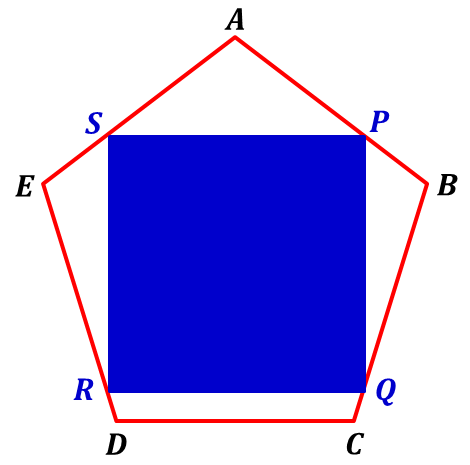Square Trapped in Pentagon
 The square
is inscribed in the regular pentagon
as shown.
The square
is inscribed in the regular pentagon
as shown.
If the side length of the pentagon is and the side length of the square is , then the ratio of can be expressed as , where and are in degrees. Find the value of .
The answer is 38.
This section requires Javascript.
You are seeing this because something didn't load right. We suggest you, (a) try
refreshing the page, (b) enabling javascript if it is disabled on your browser and,
finally, (c)
loading the
non-javascript version of this page
. We're sorry about the hassle.
See the picture below.
Apply Sine rule in Δ ASP and Δ PBQ .
∙ Δ ASP
sin 3 6 ∘ y y = sin 1 0 8 ∘ b = sin 1 0 8 ∘ sin 3 6 ∘ b
∙ Δ PBQ
sin 1 8 ∘ a − y a − y a − sin 1 0 8 ∘ sin 3 6 ∘ b a b a = sin 1 0 8 ∘ b = sin 1 0 8 ∘ sin 1 8 ∘ b = sin 1 0 8 ∘ sin 1 8 ∘ b = sin 1 0 8 ∘ sin 3 6 ∘ b + sin 1 0 8 ∘ sin 1 8 ∘ b = sin 1 0 8 ∘ sin 3 6 ∘ + sin 1 8 ∘ = sin ( 9 0 ∘ + 1 8 ∘ ) 2 sin 1 8 ∘ cos 1 8 ∘ + sin 1 8 ∘ = cos 1 8 ∘ 2 sin 1 8 ∘ cos 1 8 ∘ + sin 1 8 ∘ = 2 sin 1 8 ∘ + tan 1 8 ∘ . Thus, Ψ + Θ + Φ = 2 + 1 8 + 1 8 = 3 8 .
# Q . E . D . #